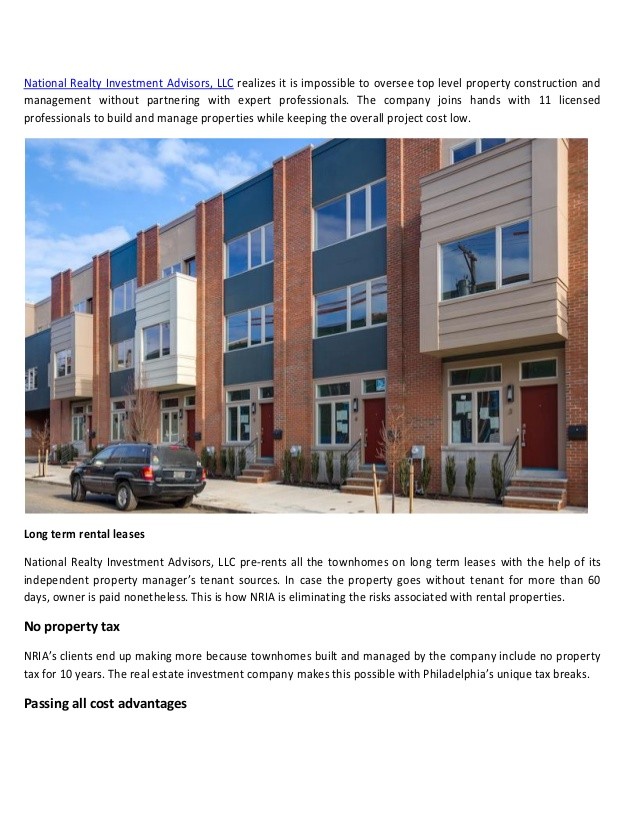Top 11 Features Of A Profitable Rental Property
Post on: 16 Сентябрь, 2015 No Comment

Now you need to know how to identify a profitable rental property.
From the time you decide to invest in real estate to the time of purchase, there’s a lot of hard work to be done. Identifying an investment grade property is not as straightforward as it seems.
Follow these PropertyInvestr tips and you be able to identify a profitable rental property
The popularity of the suburb will influence both the types of tenants you attract, and how often your property stands vacant.
If you buy near a university, your potential tenants will most likely be made up of students and your property may stand vacant during summer months when most students return to the parental home.
Demographics
Research the demographics of the suburb, and try to find a property that is a good fit for that demographic. A suburb made up of families with two children will most likely be looking for larger houses, not one bedroom units. As a landlord, try to find a property that is will attract the typical demographic of the suburb.
Strata Fees
Strata fees can seriously eat into your bottom line. Whilst paying strata fees is part of Australian property market, there is a huge difference between a good strata and a bad strata. When looking at a potential investment property which is subject to strata fees, take a look at common areas. Are they well maintained? This can give a first indication if the body corporate are doing a good job or not.
Being in an area near a good school can benefit the value of your investment in two ways. Firstly, it can inflate resale value, as parents are more willing to buy properties in areas which are located in the catchment area of good schools, and secondly, if unable to buy a property in that area, parents are willing to rent in the area, meaning vacancy rates should be low.
Would you want to live in a crime hotspot? No? Neither do most other people. Avoid properties that are located in areas of high crime chances are you’ll either face high vacancy rates, low rental yield, or poor tenants. Not to mention the capital appreciation on your investment is likely to be lower than elsewhere. Remember always consider your opportunity cost.
If you notice an announcement for a new major company moving to the area, its likely the workers will follow. Locations with growing employment opportunities tend to attract more people meaning more tenants.
Facilities
Good facilities and good access attract renters. Look for suburb that are close to transport and have lots to do, and your vacancy rates should remain low. Does the suburb have a lot of open spaces, parks, shopping centres, gyms, supermarkets and cinemas? is it close to public transport?
Current Rental Listings
When looking at potential areas, look at the amount of current listings on the major property websites. If there are an unusually large number of listings this may be an insight in the neighbourhood. You need to know if this is down to a seasonal cycle or if it has gone out of fashion.
If it has gone out of fashion, you may want to avoid it, if it is a seasonal variation, can you cover any fluctuations in demand due to future seasonal variations?
Suburb Vacancy Rates
Similar to listings, the vacancy rates will give you an idea of how successful you will be at attracting tenants. This is basic supply and demand at work. High demand means low vacancy rates and increased likelihood your property won’t be empty for long between tenants. Low demand means high vacancy rates, which means theres more competition for prospective tenants to choose from.
Mother Nature
If an area is prone flooding, the extra insurance premiums may add up, and you run the risk of having to pay for repairs and having the property uninhabitable for a time after any major disasters.
Rental Yield
Leaving possibly the most important factor until last, calculating your rental yield and knowing the amount people are willing to pay per week for your property is key to making the numbers work. Speak to a few agents and ask them what they would expect rents for the area to be. Look at other similar properties listed for rent on the real estate websites, you’ll soon get an idea of the rental range for the area and property type.
The Bottom Line
All properties and all suburbs are not created equal. As Michael Yardney often states, only 5% of properties are investment grade properties.
Identifying a profitable rental property that meets all the above criteria may not be easy, but once you do, the potential for long term gain is greatly increased.
Can you think of any other criteria for identifying a profitable rental property?














